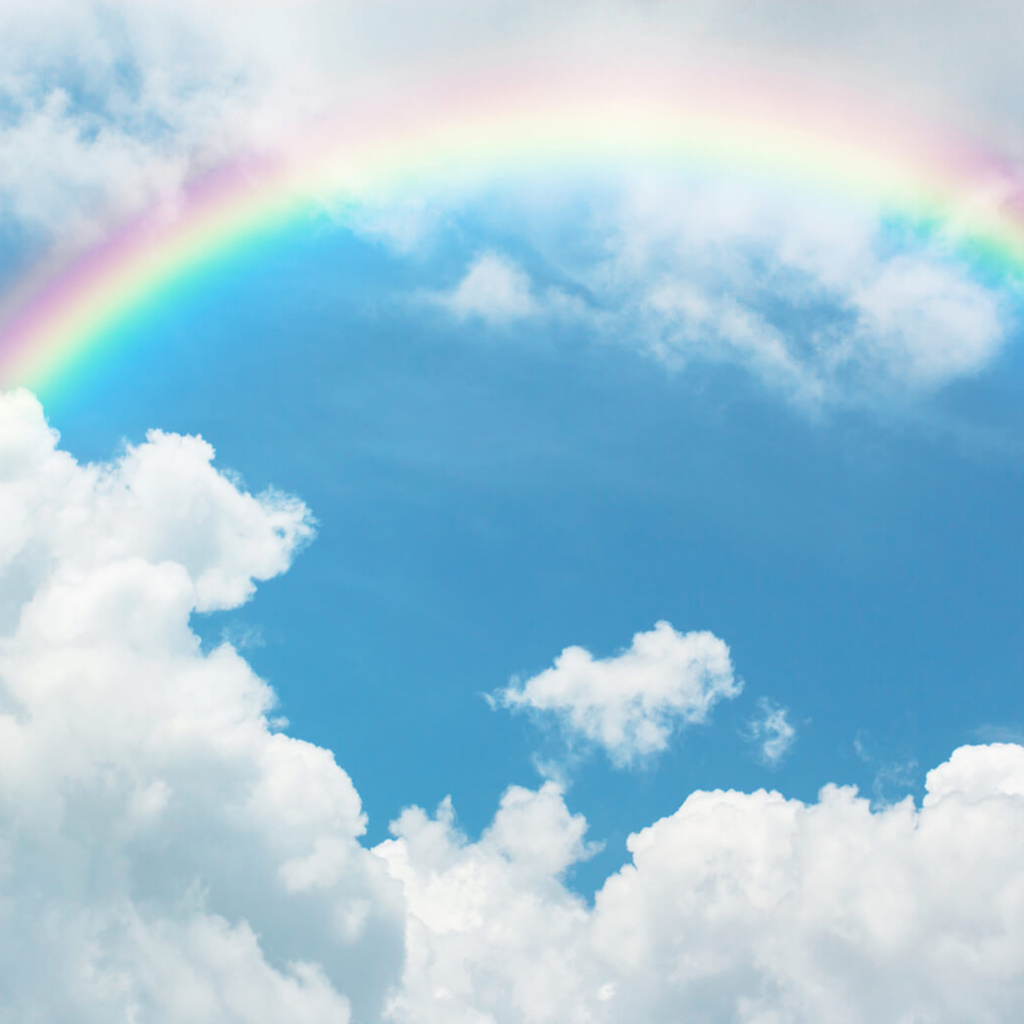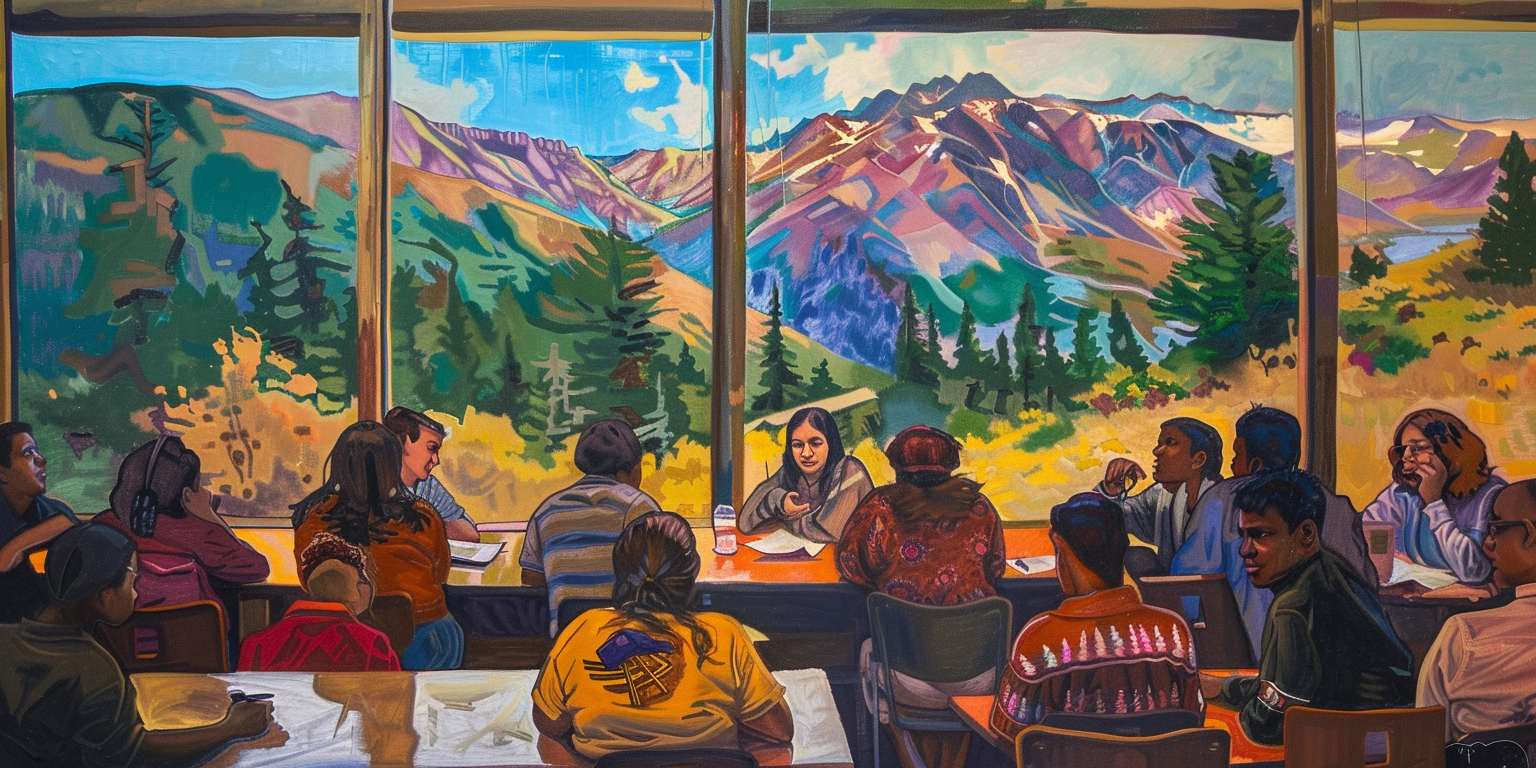During the upheaval surrounding the murder of George Floyd, a video on social media caught my attention. It was responding to the phrase “I don’t see color.” Up until seeing this video, I hadn’t thought about the implications of those four words, which are often shared in an attempt to communicate that someone doesn’t hold racist views towards others. But that was upsetting to this video creator. Why? What is it about this phrase that can feel ingenuine, patronizing—or perhaps miss an important point on race relations?
Obscuring something meaningful. I don’t see color. I don’t see color. I don’t see color. I don’t see color. As I let the phrase roll over my tongue, I couldn’t help but pull it apart and wonder if it wasn’t saying something else that wasn’t readily apparent. Although meant to say “I see everyone the same,” an image popped into my head of horses with blinders on. While intended to block the horse’s peripheral vision to distractions that could compromise their performance or demeanor, what this essentially means is the horse is prevented from seeing the whole truth of its surroundings. Could saying “I don’t see color” be kind of like putting on blinders—obscuring meaningful ways we are different, in an attempt to blur out the full nuance of our surroundings?
Or maybe “I don’t see color” was supposed to mean “differences don’t matter.” Yet I can’t help but think of the many times in my own life when differences definitely did matter, and it was obvious that the thing that made me different was altering my life experiences. It’s hard not to notice when the car salesman that you’re trying to negotiate with is constantly looking over your shoulder and asking if you brought your husband with you. It’s hard not to notice that I got asked different questions in a job interview that never even came up with my male friends—like: “So what are your family plans for the future?” And sometimes these differences are more glaringly obvious, like when a male leader told me I’m too pretty to be in leadership with him. If someone were to tell me, “I don’t see gender,” they would be denying something real and consequential—reflecting various experiences and treatment that I and many women receive, and which have a real influence on our lives (and clearly not always in a good way). Yet you can’t fix something if you don’t realize it’s broken or, worse, refuse to recognize it’s broken. This train of thought helped me to see why someone would be upset by the phrase “I don’t see color” because no matter how you slice it, saying that either denies the truth that differences do exist or suggests that differences don’t matter.
Differences matter. Differences might change outcomes. And differences should be recognized.
Differences all the way back. Most of us learn early on that we’re all different. Some of us also go on to learn that it’s okay to be different. However, not everyone is given a chance to appreciate what our differences can mean for our individual lives. To illustrate, I was running alongside my daughter one day, who was in training for a Cross Country meet. I had some long-distance running in my history, and so I thought I’d “help her train.” At the time, she was a good eight inches shorter than I with much shorter legs. I ran at a very easy pace. My stride was even, my breathing flowed effortlessly, and I was enjoying myself. My daughter’s stride, by contrast, was chaotic as she tried to keep up with me, her breathing heavy, almost gasping. She was not enjoying herself. Two people, going the same direction, doing the same thing but having two wildly different experiences and outcomes.
If, after the run, I had looked into her beet-red face as she winced from a side-stitch and said, “You and I are the same. I don’t see any difference between my run and yours,” how could she not be confused—or even upset? Of course, her run was different than mine. Yes, we both went the same distance. Yes, we both moved our bodies in a similar fashion. Yes, we both wore running shoes and stylish headbands. But because my daughter’s shorter legs simply can’t produce the gait that mine can, her run was never going to be the same as mine. And how could I forget a similar run I had with my husband, a man whose legs are much longer than my own? As I tried to keep up with him, I struggled to match his stride, and I was the one with the beet-red face at the end of the run. Differences matter. Differences might change outcomes. And differences should be recognized.
When we take for granted unrecognized racial bias and stereotypes, we inadvertently produce a whole host of differences in our life experiences. At any moment, simply for the color of our skin, we can be treated better or worse than others. To my knowledge, I have not experienced unfair treatment because of my race. I am aware, however, of having been treated better than others due to my skin color.
Not denying meaningful privilege. As a kid living in California, I was the lone white kid in my friend group, which included one black boy, and several Hispanic girls and boys. While I noticed I didn’t look like my friends, kids were kids and friends were friends—and together, we generally represented the full spectrum of skin tones. I remember one recess, our group did something the teachers didn’t like. Time has erased the memory of what exactly we did, but I’ve not forgotten the displeasure of the attending adults.
My friends were the ones reprimanded for whatever we did, but I was never called over and reprimanded even though I was playing with them at the time and doing everything they were doing. At the time, I think I was just mostly glad not to get in trouble. But I imagine my friends might have wondered, “So, why didn’t Anna get in trouble?” None of us would have ever conceived it was about our skin color—and I admittedly don’t really know what was in the minds of the adults that day. But skin color seemed to be the most salient difference between us. Whether I was treated better, or my friends worse, because of the hue of our skin, of course—both would be wrong. And so also would be not recognizing the differences between our experiences—and how an unconscious bias may be contributing.
Anyone can experience discrimination in many forms, of course, no matter their skin color. However, it’s worth recognizing that statistically, I as a white woman am far less likely to ever be a target of a hate crime compared with my black neighbors and friends. There’s also evidence that the tone of skin inside the same ethnic group can impact our experience—with 2021 statistics confirming that Hispanics with a darker skin tone reported more discrimination than Hispanics of a lighter skin tone. (Discrimination ranged from being told to go back to their own country, verbal or physical threats, or being called offensive names.) So while I and my darker-skinned friends will both go to the grocery store, send our kids to school, cross streets, travel on airplanes, apply for jobs and loans, and do other things we all do, this one variable, skin color, means their experience and outcomes may be significantly different than mine.
Non-hostile differences still matter. One could argue that if we can all stop treating each other differently because of our skin color, then we could say “I don’t see color.” But even if we all ended up evolving past this illogical notion that something as uncontrollable as skin color can determine someone’s perceived worth, we still wouldn’t experience life the same way.
I recall one sunny afternoon hanging out with my best friend at her pool, sometime around 2nd grade. As we sat there with our feet in the water, she turned to me and said, “You know, if we melted right here in the sun, you’d turn into vanilla pudding and I’d turn into chocolate pudding.” The absurdity of us melting into pudding made us both giggle. She then slightly amended that statement, “Actually, you’d probably be more of a strawberry pudding because you’d get all burned first before you melted.” We laughed harder. I was the white kid who was more likely to burn under the sun than my black friend who had much darker skin. (Yes, we both wore sunscreen by the pool, as her mother insisted.) Skin is skin and it needs protecting, but my friend knew that if one of us turned red by the end of the day, it was most likely going to be me.
The differences in our skin tone mean we won’t all interact with our environments in the same way, and it also means we have to take care of our bodies differently. We could all be living in a utopia with racial equality where “we don’t see color,” yet we would still have to take note of our differences and what they mean for each of us. Everyday life is altered for each of us by all of the things that make us different from someone else.
“I don’t see color” goes beyond just desperately trying to equate the masses; it ignores the fact that it’s just not possible to look at someone and not see color or any other differences. And by denying what we actually see, we can blind ourselves to subconscious judgments we make based on what we do see. And those subconscious judgments, if not well understood and recognized, can alter the way we make decisions and how we treat each other.
Our brains seem to do a lot when we first see someone. Researchers Johnathan Freeman and Kerri Johnson have explored what happens in the brain when viewing someone. They write, “Initial social perceptions are, in fact, hardly ‘initial.’ They reflect a dynamic cascade of interactive influences, wherein factors that were long presumed to be ‘downstream’ products of social perception, such as stereotypes, attitudes, and goals, constrain initial perceptions.”
Essentially, as we lay eyes on someone, we move through a thought process riddled with preconceived ideas and stereotypes we’ve been exposed to. During this process, our brain is also calculating the similarities and differences between us and the person who captured our attention. Since we tend to prefer and gravitate toward people we perceive as being similar to us, (and are, in fact, wired to find similarities), it may be physiologically impossible to ever not “see color.” Since all of our brains will inevitably make judgments upon similarities and differences, to consciously ignore meaningful distinctions may conceal unfair or flawed judgments we’ve made about people; judgments we need to reconcile.
But the opposite is also true: we can gain more power over our thinking if we simply pay more attention to it. Bringing more awareness to our thought process would mean paying attention to the differences we see each day. This can cause us to better understand what a difference in skin tone, gender, age, or other factors can make.
Proactively socializing children in the right direction. Another video circulated around social media for a time that showed a parent pointing to pictures of mixed-race children, asking their own child what they saw. The child said something like “kids” or “friends” but never pointed out any of the differences between the kids. That video, very reasonably, touched a lot of hearts, and the message attached to that video was “Racism has to be taught.” I agree. However, what also has to be taught is how to guard against racist views we can all pick up and absorb.
The way we help our kids remain loving towards all types of people is not to encourage them to ignore differences. I’d rather help my child see differences and consciously reject racist views and stereotypes they are definitely going to encounter throughout their lives. I need my children to be conscious of their thoughts. I need my children to view and understand differences so they can better empathize with others, rather than pretending to “not see color” in their interactions throughout the day.
Maybe the more precise way to communicate the feeling and principle we’re trying to convey is “I will not treat you differently because of something like your skin color. At the same time, I recognize this may mean we have experienced life differently.”
We don’t need to try and deny our differences in order to be free of bias. Rather, we need to get better at seeing differences and understanding what they mean and do not mean.
Reading clearly our aspirational texts. In Dr. Martin Luther King Jr.’s “I Have a Dream” speech, he said, “I have a dream that my four little children will one day live in a nation where they will not be judged by the color of their skin but by the content of their character,” I no longer believe he meant for anyone to not see or recognize the color of his skin or his children’s skin as he asked not to be judged for it. The color of his skin was part of who he was. It was one of many variables that shaped how he experienced life. He wasn’t ashamed of his skin color. He didn’t want people to pretend that he wasn’t different from them. He asked that if he was to be judged by others, it would be for his character or, one could say, the sum total of his choices. This also brings to mind the New Testament scripture that reads, “Then Peter opened his mouth, and said, Of a truth I perceive that God is no respecter of persons. But in every nation he that feareth him, and worketh righteousness, is accepted with him.”
God focuses on our choices, our use of the agency He bestowed upon us. That doesn’t mean He doesn’t see our differences. On the contrary, to be a perfect and compassionate judge, God would have to be very aware of all the factors that may influence us here on earth. So I believe God sees exactly what makes us different. The variety of creations on this earth is witness to God’s recognition of differences, and even the need for and love of differences. Seeing us as we are (and are not), He then chooses to pay attention to our characters, our choices.
If that’s true, then would not the same God have us learn to see and understand differences as well—perhaps even as the only real way to be someone acting with eyes wide open to the realities of this life and not be acted upon by the consequences related to the denial of meaningful difference? We don’t need to try and deny our differences in order to be free of bias. Rather, we need to get better at seeing differences and understanding what they mean and do not mean. Instead of refusing to see people as they are in all their varieties in order to declare ourselves at peace and harmony with all our brothers and sisters, let’s become more mindful of how our differences shape our experiences—and learn more about how others experience the same existence we occupy. At the same time, let’s gladly become more conscious of how we make judgments and whether those judgments are unfair.

Yet giving people the benefit of the doubt, let’s also appreciate that when someone says “I don’t see color,” they are most likely trying to demonstrate that they don’t want to be biased. They want to treat people equally. And those are good things—and good thoughts, which can hopefully translate into good actions. However, for the sake of better communication, better thinking, better understanding, and even faster growth toward a more equitable future, we need to learn what we actually mean—or want to mean—and say that instead.
















